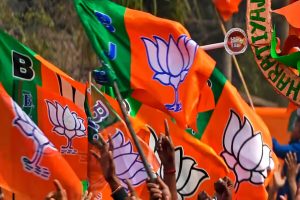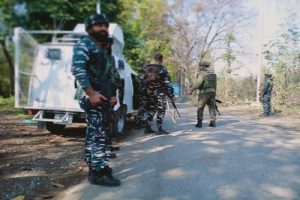India is a very unique country. Even though the country is divided into multiple states, each with its own language, food, attire and local culture, and run by autonomous governments, it has not only survived peacefully but flourished over the past 76 years as the largest democracy in the world. Apart from the differences in daily practices, people from different parts of India even look different as far as their skin complexion, facial features and other physical attributes are concerned. How do we do it? There are some obvious answers and others perhaps not so obvious. First, there is a common history for all Indians that bond them together.
Two hundred years of suppression under British rule gives them not only a hankering for freedom and peaceful living, but also a drive to succeed in their respective fields. Secondly, it is a secular country where all religions are respected and allowed to be practiced freely. It is no wonder that the three largest religions – Hinduism, Islam and Buddhism flourish here and there is still room for Christianity, Sikhism, Jainism, etc. Although there have been occasional violent Hindu-Muslim riots, they have been provoked by political agendas that exploit ill feelings that go back to the time of partition of the country. Apart from secularism, there is a much more profound commonality among all Indians. It may be termed “spirituality”.

Whether they believe in God or practice religious rituals, they all believe that there is a supreme power and ultimately life is too short to waste in meaningless conflicts. This conviction has probably been ingrained in our DNA for thousands of years. India has two official languages – Hindi and English, and all official documents are bilingual. Many Indians can speak at least one of these two languages. We, of course, have the same currency throughout the country. Although there are so many states, there is almost no barrier of any kind to the movement of people from one part of the country to another. One can live anywhere, whether it is for professional reasons or just a personal preference. From a practical point of view, the network of Indian Railways has made it easy and convenient to travel across the country.
The judicial system, educational system and other infrastructure is the same throughout the country. On the entertainment front, passion about two pastimes unite Indians more vigorously than anything else: one is the love for the game of cricket and the other is fondness for Bollywood movies and associated songs. Unlike the case in the US, there are no frequent messages or new policies about diversity and inclusivity which only remind us that we are different. Equality is understood at a fundamental level. Next, let us look at the geographical structure of India from another point of view.
India can be divided into four broad regions: the East including West Bengal, Assam, Odisha and Bihar; the West including Gujarat, Maharashtra and Rajasthan; the North including Punjab, Haryana, Jammu and Kashmir, Uttarakhand, Uttar Pradesh and Himachal Pradesh; and finally, the South including Telangana, Tamil Nadu, Karnataka and Kerala. Madhya Pradesh, being in the middle, has pieces that go with each of above regions, but it lacks unique distinctness. The East has always been the centre of intellectual activities – literature, science, fine arts, economics, spiritual activities. However, they seem to lack business interest and the drive to accumulate wealth. They are happy in academic, clerical and various government jobs. When we need people with muscle (in military, agriculture and various sports, for example) and people who are good looking, especially in the movie industry, we look at the North.
It was amazing to me to recognize that virtually all famous male Bollywood actors and several actresses of my time were from Northern India. Although we always knew that South Indians were exceptionally strong in mathematics, with examples like Ramanujam, the recent explosion in the number of IT engineers throughout the world coming from the south left no doubt about their superior analytical skills. The West is where all the rich people are. If you make a list of the top ten wealthiest persons in India, you will find that most of them are from the three states mentioned above. The Sensex is in Mumbai; most major banks are headquartered in the west. There are plenty of cross-fertilizations.
To engage in any profession there is no implicit or explicit requirement that a person must be originally from that region. Can one learn some lessons from our experience and perhaps build a model for peaceful coexistence of different nations on this earth? The world has become severely interdependent in the post-WWII era, primarily because of international trade. While this has led to prosperity, we have also become vulnerable to conflicts anywhere in the world. This became painfully obvious during the Russian invasion of Ukraine which led to world-wide inflation and shortage of fuels, food etc. There is continuing international tension in anticipation of a similar invasion of Taiwan by China.
Then there are unpredictable rogue nations like Iran and N. Korea which can throw the entire world in turmoil by some outrageous action. The ongoing IsraelHamas conflict is another example. Our “Indian experience” has taught us the following requirements for peaceful coexistence of different states: a) secularism; b) common language; c) common currency; d) philosophical/spiritual mindset; d) no travel restriction and residency requirement; d) same interest in sports; and e) similar interests in entertainment, especially movies and music. I believe that separation of the country of India into four regions, each of which excels in a certain area helps us maintain an overall stability because there is no constant competition (and hence conflicts) among states. Perhaps we can divide the entire globe into regions with specific expertise.
For example, North America into technology, Europe into a financial hub, Africa into sports, music and entertainment, Asia into a literature/fine arts and manufacturing centre, Australia into agriculture and South America into a source of minerals and energy. The US dollar can be the common currency. English and Spanish can be made the two official languages. Soccer can be the universal sport. International superstars like Shakira and Michael Jackson can lead global entertainment. While each country would be ruled by its own leader there would be an overall central overseeing organization, with a “leader of the world” who would be elected from different countries by rotation. This organization would be like the UN but with real power and authority to enforce binding rules and policies regarding conflicts, economy and sharing of resources. One must eliminate visas and allow free migration of people between countries.
This may be the most difficult condition to impose because it implies an end to the existence of countries as separate sovereignties. Of course, it is easy for me to propose this concept but implementation of something like this will require decades of international diplomacy. The good news is that there is a unifying peace-loving force across the globe resulting from our suffering in two world wars, a global pandemic and numerous natural disasters. Also, some of the segregations of regions into specialized activities are already happening naturally because of international trade and easier intercontinental migration.
(The writer, a physicist who worked in academia and industry, is a Bengali settled in America.)












